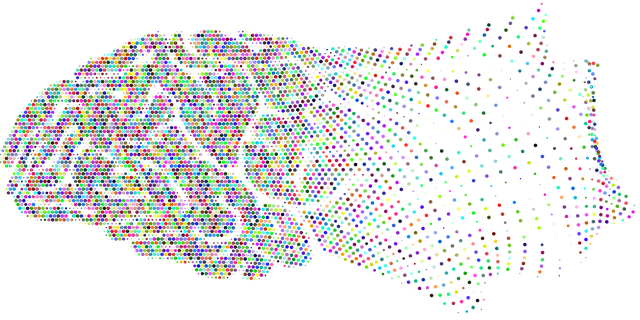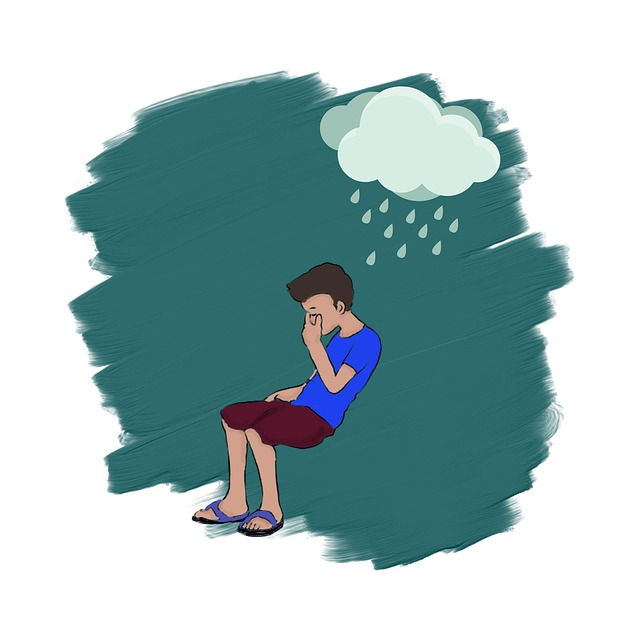Children with bipolar disorder face intense emotional challenges that disrupt daily life. Specialized Therapy for Children Bipolar Disorder programs teach emotion regulation through mental health education, including cognitive-behavioral therapy (CBT) and mindfulness practices. These programs empower kids to manage emotions, prevent depressive episodes, and foster resilience through age-appropriate activities. Implementing these techniques at home and school supports their emotional well-being. Therapists use metrics like the Children's Depression Inventory (CDI) to adjust treatment plans, ensuring success and preventing burnout.
Emotion regulation techniques are essential tools in managing bipolar disorder, especially in children. This comprehensive guide explores effective strategies to help young individuals navigate their emotional landscapes. We delve into understanding the specific needs of children with bipolar disorder and provide insights on common technique teachings. Learn practical ways to implement these skills at home and school, ensuring a supportive environment. Discover methods to measure success and adapt approaches for optimal therapy in treating bipolar disorder in children.
- Understanding Emotion Regulation for Children with Bipolar Disorder
- Common Techniques in Teaching Emotion Regulation Skills
- Implementing These Techniques at Home and School
- Measuring Success and Adjusting the Approach
Understanding Emotion Regulation for Children with Bipolar Disorder

Children with bipolar disorder often struggle with intense and volatile emotions, which can significantly impact their daily lives and overall mental health. Understanding emotion regulation is a crucial aspect of managing this condition. Through specialized therapy for children with bipolar disorder, mental health professionals aim to equip young individuals with effective coping strategies.
One key area of focus in these Therapy for Children Bipolar Disorder programs is Mental Health Education. Teaching kids about emotions, their triggers, and healthy expression methods empowers them to recognize and manage their feelings. This includes learning stress management techniques, which are essential tools for preventing depressive episodes and mood swings. By incorporating activities and strategies tailored to their age group, these programs help children develop resilience and a better understanding of their emotional experiences, fostering a healthier relationship with their emotions in the long term.
Common Techniques in Teaching Emotion Regulation Skills

Teaching emotion regulation skills is a crucial aspect of therapy for children with bipolar disorder. Some common techniques include cognitive-behavioral therapy (CBT), which helps kids identify and change negative thought patterns, and mindfulness practices such as deep breathing and meditation, that foster present-moment awareness. These methods empower children to manage their emotions effectively, reducing the impact of mood episodes.
Additionally, strategies focused on building inner strength through positive self-talk and resilience training equip youngsters with coping mechanisms. Empathy building strategies are also vital, fostering understanding between peers to combat mental illness stigma reduction efforts. By combining these techniques, therapists create a holistic approach tailored to each child’s unique needs, enhancing their ability to navigate emotional challenges successfully.
Implementing These Techniques at Home and School

Implementing emotion regulation techniques at home and school is a powerful approach to supporting children with bipolar disorder. Parents and educators can play a pivotal role in teaching young minds to navigate their emotions effectively, fostering resilience and overall mental wellness. At home, parents can incorporate simple yet effective practices such as mindfulness exercises, where children learn to focus on the present moment, calming their minds and reducing impulsive reactions. This can be done through guided meditation or even short breathing exercises during stressful situations.
Schools, too, can integrate these techniques into their curriculum and extracurricular activities. Stress management workshops organized by schools can equip students with tools to handle intense emotions. Additionally, encouraging journaling as a mental wellness exercise allows children to express and understand their feelings, providing an outlet for emotional release and self-reflection. Compassion cultivation practices can also be introduced, teaching children to respond to their emotions with kindness and understanding, which is especially beneficial for those managing bipolar disorder.
Measuring Success and Adjusting the Approach

Measuring success and adjusting the approach are integral parts of teaching emotion regulation techniques, especially in therapy for children with bipolar disorder. Progress should be tracked using a combination of self-reported scales, parental feedback, and clinical observations. These metrics allow for a nuanced understanding of the child’s emotional state and the effectiveness of the interventions. For instance, tools like the Children’s Depression Inventory (CDI) or the Strengths and Difficulties Questionnaire (SDQ) can gauge mood stability and emotional control over time.
Adjustments to the approach should be guided by these measurements and the child’s individual needs. If burnout prevention strategies for healthcare providers are not implemented, the therapist may need to reevaluate their method. Incorporating practices like mindfulness meditation can enhance emotional healing processes, ensuring the therapy remains engaging and effective. This iterative process is crucial in navigating the complexities of bipolar disorder, fostering stability, and promoting healthy coping mechanisms.
Teaching children with bipolar disorder emotion regulation techniques is a powerful tool in their therapeutic arsenal. By understanding the unique needs of these young individuals, educators and caregivers can implement effective strategies both at home and in the classroom. Common techniques, such as mindfulness, cognitive restructuring, and behavioral activation, have shown promise in helping children gain control over their emotions. Consistent measurement of progress and adaptability to individual needs ensure that each child receives a tailored approach, fostering better mood stability and overall well-being. With dedicated instruction and support, these strategies can empower children with bipolar disorder to navigate their emotional landscapes successfully.














